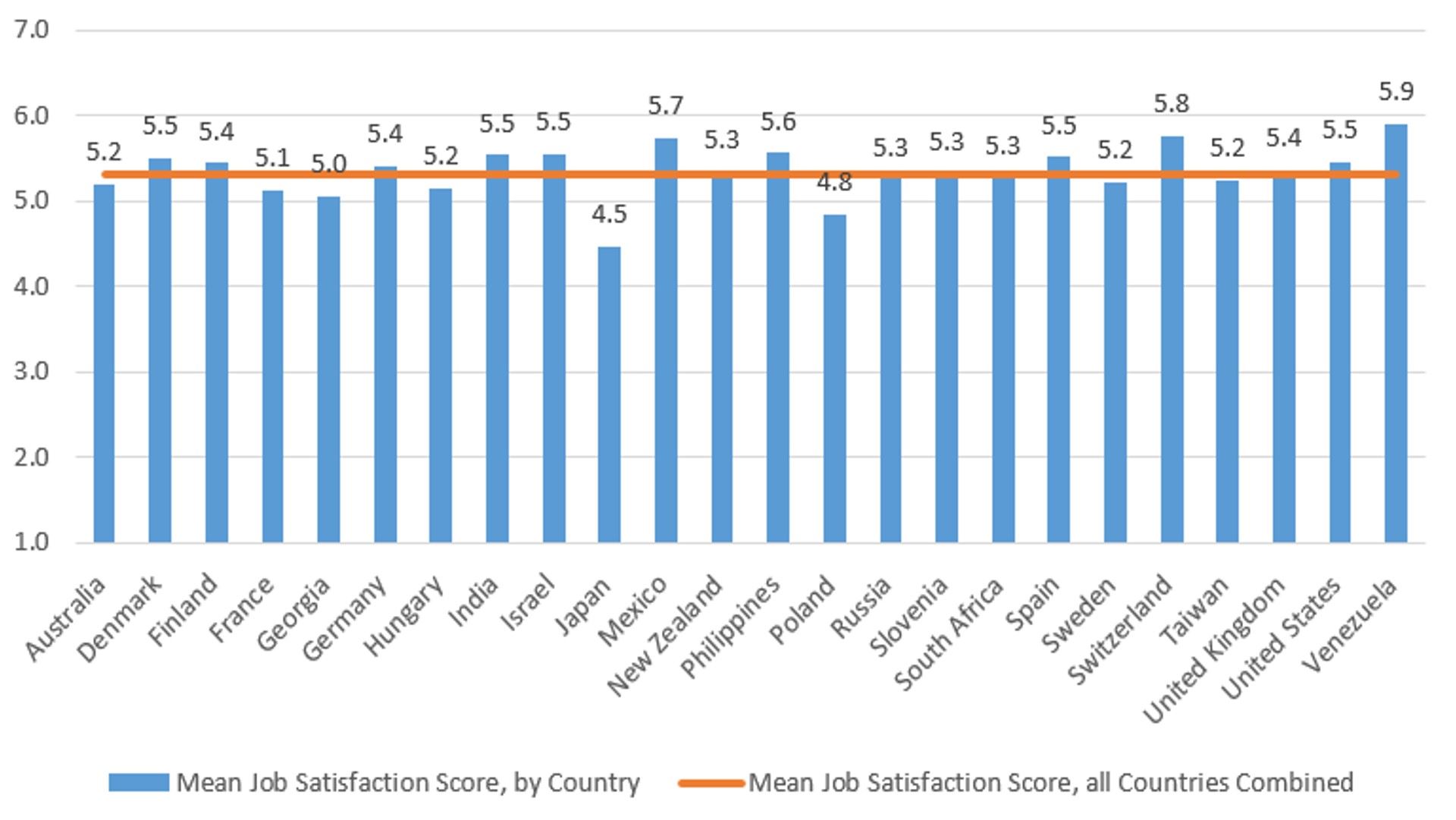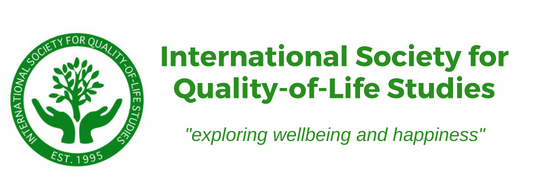The Importance Life and Job Satisfaction
By Jonathan H. Westover, Ph.D.
Utah Valley University
Human Capital Innovations, LLC
The level of satisfaction that workers feel and obtain through work is directly correlated to their overall sense of life satisfaction, which leads to a variety of positive individual, organizational, and societal outcomes (Böckerman & Ilmakunnas, 2012; Petty et al. 1984).
As Buetell (2006) argues, “Life satisfaction is an overall assessment of feelings and attitudes about one’s life at a particular point in time, ranging from negative to positive.” Happiness or life satisfaction is the degree to which an individual determines the overall quality of his/her life (Life Satisfaction). As Diener et al. note (1985), “three separate components of subjective well-being have been identified: positive affect, negative affect, and life satisfaction” (71). Pavot and Diener (1990) also state, “Life satisfaction refers to a judgmental process. In which individuals assess the quality of their lives on the basis of their own unique set of criteria” (164). Additionally, the positive or negative view that we have on our own lives has substantial impact on each of us (Yamasaki et al. 2011).
For years, economists and social scientists have used gross domestic product (GDP) as the standard metric for measuring the success and health of a country (e.g., Snyder 1936; How Do We Measure ‘Standard of Living’ 2015). However, GDP falls quite short in measuring the social wellness of a country because it fails to take into account subjective well-being in response to economic activity in a country (Easterlin 1974). Measures of subjective well-being can only be gathered through surveying/interviewing individuals about their own unique feelings towards their life and circumstance.

Figure 1: Global Comparison Life Satisfaction, 2014
Source: World Values Survey

Figure 2: Global Comparison Job Satisfaction, 2015
Source: International Social Survey Programme
Based on extensive research into work and life satisfaction, it is clear that various intrinsic and extrinsic motivators in the workplace environment have a significant impact on improving the overall job satisfaction of workers, as well as the life satisfaction of citizens in a country (Westover, 2016). Extrinsic and Intrinsic factors of motivation can play a key role in predicting the overall level of job satisfaction in a country because they help determine why and how an employee is driven and finds meaning and value in work. This is consistent with the findings of many studies that show there is a direct correlation between employee motivation and satisfaction, which in turn increases employee performance (e.g., Tietjen et al. 1998; Locke et al. 1990; Roos et al. 2008).
While we see different countries involved in the World Values Survey and the International Social Survey Programme, from the figures above, we can see that the countries with the highest job satisfaction also have the highest life satisfaction. In regards to job satisfaction, additional research has shown that in countries where employees most frequently mention extrinsic factors as important aspects of a job have a lower job and life satisfaction, whereas in countries where most workers frequently mention intrinsic factors as important aspects of a job have a higher job and life satisfaction (Westover, 2016).
The brief results presented and referenced herein can be used by businesses and corporations in order to help increase employee motivation, job satisfaction, and employee life satisfaction by identifying and making changes to the different extrinsic and intrinsic motivators within their workplace environment. This insight can also be usitlized by government employees and policy makers in order to determine the best and worst causes and effects of certain public policy implementations on life satisfaction and worker satisfaction.
References:
Böckerman, P., & Ilmakunnas, P. (2012). “The Job Satisfaction-Productivity Nexus: A Study Using Matched Survey and Register Data.” ILR Review 65 (2): 244–62. doi:10.1177/001979391206500203.
BostonFed. How Do We Measure ‘Standard of Living.’ Accessed May 17, 2016. https://www.bostonfed.org/-/media/Documents/ledger/ledger2003/measure.pdf
Buetell, N. (2006). Life satisfaction, a Sloan Work and Family Encyclopedia entry. Retrieved May 10, 2007, from the Sloan Work and Family Research Network website: http://wfnetwork.bc.edu.
Diener, E. D., Robert A. Emmons, Randy J. Larsen, & Sharon Griffin. (1985). “The Satisfaction with Life Scale.” Journal of Personality Assessment 49 (1): 71–5.
Easterlin, R. A. (1974). “Does Economic Growth Improve the Human Lot? Some Empirical Evidence.” In Nations and Households in Economic Growth, edited by P. A. David and M. W. Reder, 89–125. Philadelphia: Elsevier.
Locke, E. A., & Latham, G. P.. (1990). “Work Motivation and Satisfaction: Light at the End of the Tunnel.” Psychological Science 1 (4): 240–6. doi:10.1111/j.1467-9280.1990.tb00207.x.
Snyder, C. (1936). “The Capital Supply and National Well-Being.” The American Economic Review 26 (2): 195–224.
Pavot, W., Diener, E. D., & Fujita, F. (1990). Extraversion and happiness. Personality and individual differences, 11(12), 1299-1306.
Petty, M. M., Mcgee, G. W., & Cavender, J. W. (1984). “A Meta-Analysis of the Relationships between Individual Job Satisfaction and Individual Performance.” The Academy of Management Review 9 (4): 712–21. doi:10.2307/258493.
Roos, W., & Eeden, R. V.. (2008). “The Relationship between Employee Motivation, Job Satisfaction and Corporate Culture.” SA Journal of Industrial Psychology 34 (1): 54–63. doi:10.4102/sajip.v34i1.420.
Tietjen, M. A., & Myers, R. M. (1998). “Motivation and Job Satisfaction.” Management Decision 36 (4): 226–31. doi:10.1108/ 00251749810211027.
Westover, J. .H. (2016). “The International Political Economy of Worker Satisfaction: A Cross-national HLM Analysis.” Evidence-based HRM: A Global Forum for Empirical Scholarship 4 (3): 116-143.
Yamasaki, K., Sasaki, M., Uchida, K., & Katsuma, L. (2011). “Effects of Positive and Negative Affect and Emotional Suppression on Short-term Life Satisfaction.” Psychology, Health & Medicine 16 (3): 313–22. doi:10.1080/13548506.2011.554564.
*This is adapted from an article originally published in The Global Studies Journal. For full article see: Eskildsen, B., Light, J. Westover, J.H., & Carlisle, K. (2017). "Shifting Comparative Job and Life Satisfaction across the Globe, 1995–2014." The Global Studies Journal 10 (2): 21-39. doi:10.18848/1835-4432/CGP/v10i02/21-39.
Author Bio: Jonathan H. Westover (Ph.D., University of Utah, USA) is an Associate Professor of Organizational Leadership and department chair in the Woodbury School of Business (UVU), Academic Director of the UVU Center for Social Impact and the UVU SIMLab, and Faculty Fellow for Ethics in Public Life (previously the Associate Director) in the Center for the Study of Ethics. He also is an experienced OD/HR/Leadership consultant (Human Capital Innovations, LLC), with experience transforming organizations across the globe. Dr. Westover has been published widely in academic journals, books, magazines, and in popular and professional media locally, nationally, and abroad (such as Forbes, The Economist, U.S. News and World Report, The Wall Street Journal, The Washington Post, and USA Today). He has also been extensively quoted and cited as a management expert in popular press nationally and abroad.
